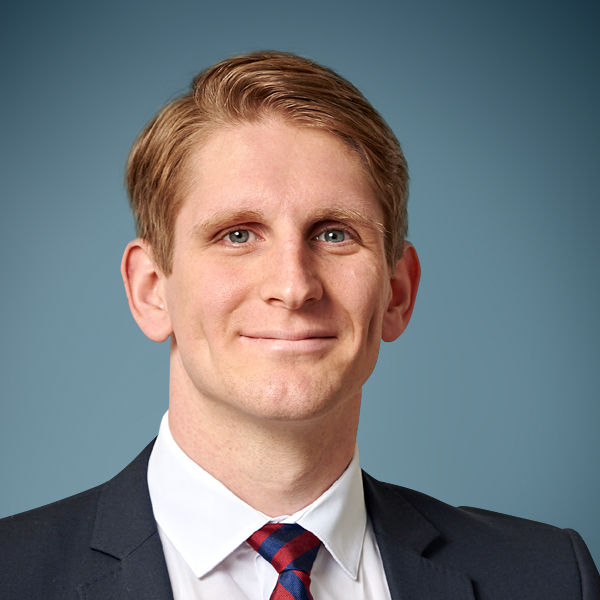We made a research trip to Asia for in-person due diligence, meeting over a dozen companies across Malaysia, Indonesia, the Philippines, and Vietnam. We found hidden gems and shining stars which can benefit our portfolio, and we also uncovered troubled companies which are better to be avoided.
The pandemic restrictions in Asia were much harsher than in other regions, and most Asian countries waved good-bye to the lockdowns and mobility limitations much later than their peers across the globe. We were interested to see with our own eyes how Asian businesses are faring in the post-Covid era, and luckily we could travel to (and from) the region again.

We went on a research trip to Asia and met over a dozen companies.
One of only five in the world from Malaysia
In Malaysia, we went to the local “Silicon Valley” – the Penang island – and met with the CEO and senior management of a $300m automation equipment business which is one of the only five companies in the world to make burn-in test equipment for silicon carbide wafers. We toured the company’s facilities and observed engineers generating new solutions from scratch for electric vehicles (EV), medical devices, and automated warehouses.
The firm keeps expanding its offering for the EV clients, and this strategic move is very timely given the increase in demand for EV-related services amid the accelerating pace of silicon carbide use in EV power management applications. The company’s management prepared well for this EV foray, having built a massive new production facility and hired several hundred engineers in the past two years. The EV segment is showing very strong earnings growth while the existing business lines such as the medical device segment are also picking up steam, altogether delivering on the company’s official plan to double revenue from 2022 to 2025.
However, what makes us most excited about this company is not its future-proof growth and not even its massive $80m cash position (over a quarter of the market cap) – it’s the enormous valuation arbitrage opportunity it presents. While the stock trades at a solid 44x P/E multiple in its home market of Malaysia, not many investors are aware that the business is also listed in Hong Kong, where it trades 5x cheaper at a laughably low 9x P/E. And another comparison: its publicly listed peer in the US specializing in silicon carbide wafer burn-in test equipment trades at 91x P/E!
In Kuala Lumpur the next day, we met for lunch with the CEO of another tech-related business which delivered an over 1,000% return to our fund over the past 10 years. While his own business is currently too expensive for our taste, trading at over 40x P/E, he confirmed that the Penang-based company we had met a day earlier is “crazy cheap” in Hong Kong, especially considering the prime quality of its assets listed there.

On our plant tour with the CEO and director of a $300m automation equipment manufacturer in Malaysia.
Top CEO in Indonesia
We flew to Indonesia on an iconic red-colored low-cost Malaysia-headquartered pan-Asian airline that introduced widescale discount flying to Southeast Asia. After being grounded by the pandemic, the airline restructured its assets and debts and is now back in the air, producing progressively strong passenger booking numbers, opening new routes to China and Central Asia, and trading far below its pre-pandemic share prices. We believe the skies are more blue for this $200m airline and its $800m parent holding than most investors realize.

We flew on an undervalued iconic Malaysian low-cost airline.
In Indonesia, we did due diligence on several companies in Jakarta and Surabaya – the largest and the second-largest cities of the world’s fourth-largest country (in terms of population size). Just these two cities' urban agglomerations combined account for over 40 million residents.
Largest copper smelter in the world
In Surabaya, we visited an industrial port estate of a $2bn holding which trades at 10x P/E. This holding had always been mainly known as a chemicals distributor but in the last few years it has been co-developing a large industrial port estate together with the government of Indonesia. This deep sea port, with water depth up to 16m, attracts global conglomerates willing to set up production in the East Java region that offers cheap (and surplus) electricity and convenient marine trading links. For example, one of the top-three global copper producers has already acquired land in this industrial estate and is building the world’s largest single-line copper smelter.
Later in Jakarta, we also met with the company’s management and visited the control room. According to the management, the land sales from the newly developed industrial port estate have now started kicking in with a disproportionately positive impact to the holding’s bottom line, given that the margins from land sales are multiples higher than the margins from chemicals distribution. However, we realize that the land sales may still take a couple of years to make a truly sizable contribution to the company’s earnings which will until then be overshadowed by the earnings from chemicals distribution, a business with a less steady earnings profile. We will continue monitoring the results of this company.

Doing our due diligence on the industrial port estate of a $2bn holding in Indonesia.
Bringing Starbucks to the masses
In Jakarta, we met with the founder CEO of a $2bn lifestyle retailer which through its hundreds of locations sells Nike shoes, Lego toys, Starbucks drinks, and other aspirational goods and foods demanded by the growing middle and upper middle class of Indonesia. This business, like most others, had a tough time during the pandemic with malls being closed, but thanks to highly efficient operational improvements came out of Covid much more profitable. The foot traffic in the prime Indonesian malls has clearly recovered, which we can personally attest to after we visited one of the large 10-floor malls in Surabaya which featured a number of the company’s brands. The mall was packed with visitors of a very growth-promising demographic profile, something that is rarely seen in the aging Europe.
The CEO has been leading the company from scratch over 25 years ago to a prime retailer with over 150 world-class brands in the portfolio it is now, through many tough negotiations with the global partners, through severe economic crises and through the pandemic – but constant were the ever-improving profitability and the consistently high employee loyalty. He is one of the top CEOs we have met in over 2,000 management meetings in emerging markets, and we believe that under his leadership the company will continue growing by increasing the number of brands and expanding in Southeast Asia, bringing the lessons learned in Indonesia to markets such as Vietnam, Thailand, and the Philippines.

Meeting with one of the best CEOs in emerging markets, the CEO of a $2bn lifestyle retailer in Indonesia.
Checking all the boxes but…
In Jakarta, we met with the management of another retailer, a $500m company serving low- and middle-income consumers. We also visited its stores in both Jakarta and Surabaya and enjoyed shopping for traditional Indonesian batik shirts. While in theory the company has a lot going for it that could entice an average investor – a cheap 5x P/E valuation, a 20% dividend yield, a share buyback, and the same favorable Indonesian demographics – in practice it still struggles to achieve the most important goal, that is, to grow the business, and the management even resorted to cutting the earnings guidance recently. Despite a lot of secondary boxes ticked, over the long run when there is no sound earnings growth there is typically no stock price growth either. The company has been through three CEOs in the past decade, and seems to be struggling with consistent delivery of results for its stakeholders.
We think this tale of two retailers gives a good example of a company’s ability to execute. Some companies manage to grow earnings for many years despite various crises and storms so common in emerging markets, while others cannot deliver consistent results. In-person meetings in particular help us identify top companies and managers able to allocate their capital to the best investments that can help the businesses grow and prosper – be it in their people, in new assets, or in technology – as well as companies that lack consistency and ability to execute and drive long-term shareholder value.
Trading like (no) tomorrow in Vietnam
Vietnam was the last country visit we made for company meetings. We met several businesses, and the common observation from our meetings was that the local market, which was so hot just a couple of years ago before collapsing -33% in 2022, is not having its best times when it comes to true investment fundamentals. Most companies have negative earnings growth and the earnings outlook for the year is mainly bleak, given weakened global demand for Vietnamese exports. We even wondered how it is possible that the listed and oftentimes most efficient businesses in the country are not growing sales and earnings while the official GDP figures show a very strong economic growth – perhaps that growth comes from other parts of the economy.
However, the local and foreign investors are currently very active in the market, buying what in our view are overpriced stocks (double-digit P/E valuations with negative earnings growth) in the hopes of a better 2024. As such, the trading volumes have picked up substantially in the last few months, which is a strong precursor of brokerage companies’ earnings – and we identified a $500m mid-tier brokerage which is best-positioned to capture this increase in market liquidity.

Meeting with a $300m IT distributor in Vietnam which used to be our fund’s best performer but is now going through turbulence.
Washing elephants in Thailand
Besides meeting companies and local contacts such as analysts and industry experts, we also used our time in Asia as an opportunity for team building for the first time since the pre-pandemic 2019. We had a friendly team retreat in Thailand with our Asia-based team members and enjoyed washing the elephants, trying to learn how to cook Thai food, and exploring beautiful islands.

Washing undervalued and underappreciated elephants for team building.
 Burton Flynn, CFA
Burton Flynn, CFA
Equity Research, Evli Emerging Frontier Fund
 Ivan Nechunaev
Ivan Nechunaev
Equity Research, Evli Emerging Frontier Fund












